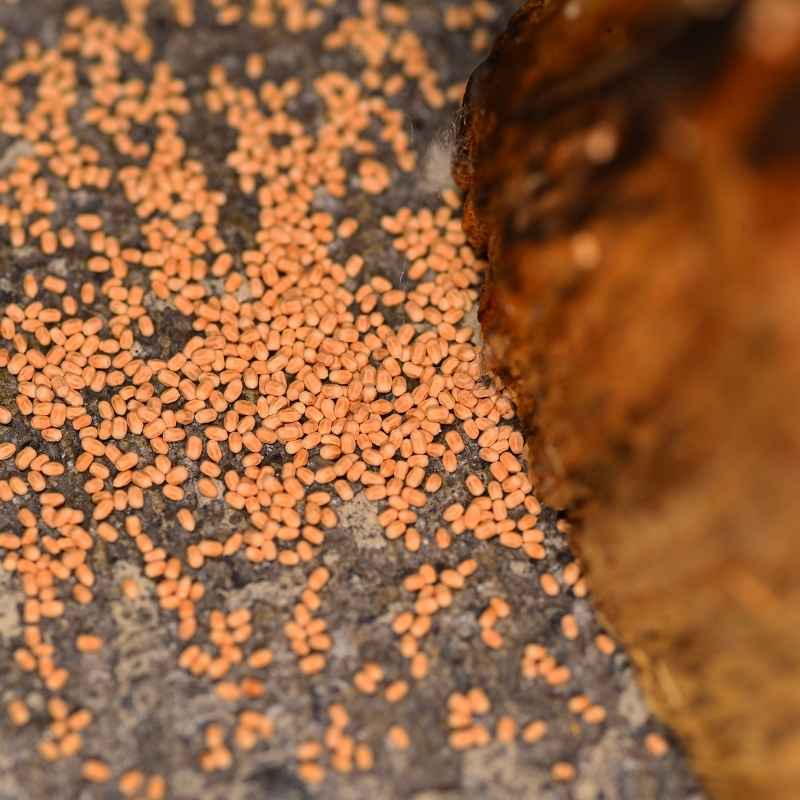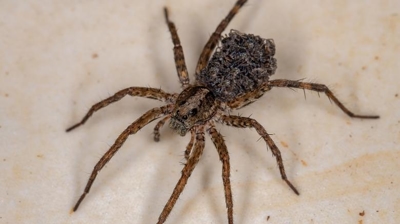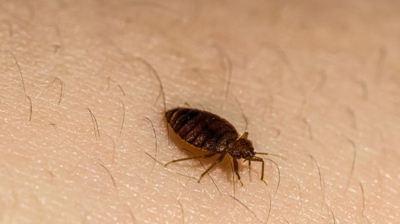
Drywood Termites

Are Drywood Termites Harmful?
Drywood termites are significant pests due to the extensive and often hidden damage they can inflict on wooden structures and objects, as well as the challenges these termites present in detection, treatment, and control. Here is why drywood termites are classified as pests:
- Structural Damage to Wood: Drywood termites consume wood from the inside out, hollowing it while leaving the outer surface largely intact. This behavior can compromise the structural integrity of buildings, furniture, flooring, and other wooden items without obvious outward signs until severe damage has occurred. Unlike subterranean termites, they do not require contact with soil and can infest any part of a structure above ground.
- Stealthy and Difficult to Detect: Drywood termites are notoriously difficult to detect in the early stages of infestation. They live deep within the wood they consume and do not build external mud tubes like subterranean termites do. Infestations often go unnoticed for months or even years, during which time significant internal damage may occur.
- Widespread Infestation Potential: A single colony of drywood termites can infest multiple areas of a structure. Because they live entirely within wood, they can be transported inadvertently in infested furniture, lumber, or wooden crafts, spreading infestations across regions and into previously unaffected buildings.
- Aesthetic and Financial Impact: In addition to compromising structural soundness, drywood termites also cause cosmetic damage. Their tunneling distorts the shape and surface of wood, and the presence of their frass (termite droppings) is unsightly. Repairing termite damage is often expensive and time-consuming, and in severe cases, entire structures or pieces of furniture may need replacement.
- Complexity and Cost of Treatment: Treating drywood termites is more complex than treating many other household pests. Because they nest inside the wood they infest, localized treatments may not reach all colony members. This often necessitates whole-structure fumigation, a costly, disruptive, and time-intensive process requiring residents to vacate the premises. Alternative treatments like heat or spot treatments may not always be effective if the full extent of the infestation is not accurately determined.
- Resistance to Environmental Factors: Unlike subterranean termites that need moisture from the soil, drywood termites extract the moisture they need from the wood they consume. This allows them to thrive in dry, warm climates and in buildings where moisture control alone is insufficient as a preventive measure.
- Persistent Reinfestation Risk: Even after treatment, the risk of reinfestation remains high if wood remains exposed or untreated. Without regular inspections and preventive treatments, especially in termite-prone areas, new colonies can easily establish themselves in the same structure or surrounding materials.
Drywood termites are considered serious pests because of their ability to cause hidden, long-term damage to wooden structures and materials, their difficulty of detection, and the complexity and cost of eradication. Their presence can result in substantial financial losses, aesthetic degradation, and safety hazards, making professional pest management not only advisable but essential in infested or at-risk properties.
Drywood Termite Control
Hiring our professional pest control for drywood termites is crucial because these termites are highly destructive and difficult to detect and eliminate on your own. Here’s why our professional intervention is the most effective approach:
- Accurate Identification: Drywood termites can easily be mistaken for other pests, such as ants or moisture-loving subterranean termites. Our professionals have the expertise to correctly identify the species, which is essential because the treatment methods differ depending on the type of termite. Misidentification can lead to ineffective treatments and continued structural damage.
- Thorough Inspection: Drywood termites often nest inside the wood of your home, including walls, floors, furniture, and structural beams. They leave minimal visible evidence, sometimes only small piles of “frass” (termite droppings) that can be easy to overlook. Our professional inspectors can detect hidden infestations using specialized tools and techniques, including moisture meters, infrared cameras, and tapping inspections.
- Targeted Treatment Options: DIY treatments, such as surface sprays or over-the-counter chemicals, are rarely effective against drywood termites because the colonies are deep inside the wood. Our professionals have access to advanced, targeted treatment options, like whole-structure fumigation, which eliminates termites in all hidden galleries, injections or foam treatments directly into infested wood, and termite baits, which attract and eliminate colonies gradually.
- Preventing Structural Damage: Drywood termites eat wood from the inside out, which can compromise the structural integrity of your home over time. Our professionals not only eliminate the termites but can also provide guidance on preventing reinfestation, protecting your investment in the long term.
- Safety and Compliance: Termite treatments often involve chemicals or gases that can be hazardous if improperly handled. Our professionals are trained to apply these safely and in compliance with local regulations, protecting both your family and pets.
- Long-Term Monitoring and Prevention: After treatment, we provide ongoing monitoring and maintenance plans to prevent future infestations. Early detection can save thousands of dollars in repairs and keep your home termite-free.
Drywood termites are elusive, destructive, and difficult to eradicate with DIY methods. Our professional pest control ensures accurate identification, effective treatment, safety, and long-term protection for your home.
Learn more: How To Get Rid Of Drywood Termites
What Do Drywood Termites Look Like?
Drywood termites have distinct physical characteristics that vary depending on their caste—alates (winged reproductives), soldiers, and workers (or pseudoworkers, since drywood termites lack a true worker caste). Here is a breakdown of their appearance by caste:
Alates (Winged Reproductives)
These are the termites most often seen by homeowners, especially when they swarm to establish new colonies.
- Size: About 3/8 to 1/2 inch long, including wings.
- Color: Light brown to dark brown or tan; varies slightly by species.
- Wings: Two pairs of long, translucent wings with a slight iridescence; wings are nearly equal in length and extend well beyond the body.
- Antennae: Straight or slightly curved, bead-like.
- Distinctive Traits: Wings have visible venation and are often shed shortly after swarming. Unlike subterranean termites, they do not leave behind mud tubes; instead, their presence is often first noticed by discarded wings or frass (fecal pellets).
Soldiers
Soldiers are responsible for defending the colony from predators.
- Size: Slightly smaller than alates, about 3/8 inch long.
- Color: Creamy white to light brown body with a large, dark brown head.
- Head: Rectangular and heavily sclerotized (hardened).
- Mandibles (Jaws): Large, well-developed, curved mandibles for defense.
- Antennae: Straight and bead-like.
- Distinctive Traits: They have no wings and are rarely seen unless the colony is disturbed. Their oversized heads and powerful jaws are their most distinguishing features.
Nymphs / Pseudoworkers
Drywood termites do not have a true worker caste. Instead, immature termites called pseudoworkers (false workers) perform the labor within the colony.
- Size: Smaller than soldiers and alates, around 1/4 inch long.
- Color: Creamy white to pale yellow.
- Body: Soft-bodied and wingless.
- Head: Small, with no large mandibles like soldiers.
- Distinctive Traits: Responsible for feeding, grooming, and colony maintenance. Rarely seen unless wood is opened or infested materials are dismantled.
General Identification Tips
- No contact with soil: Unlike subterranean termites, drywood termites live entirely in dry wood, so mud tubes are not present.
- Frass: Presence of dry, pellet-like droppings (hexagonal and ridged) near wooden structures is a telltale sign.
- Wings: Shedded wings near window sills or wooden frames are often the first sign of a swarming event.
Where Are Drywood Termites Found?
You are most likely to encounter drywood termites in warm, coastal, or subtropical regions, particularly where wood is abundant and remains dry for long periods. Unlike subterranean termites, which require soil contact and moisture, drywood termites live entirely within dry wood and draw all the moisture they need from the wood itself. This allows them to infest above-ground wooden structures, often in places that are dry and exposed.
Here is where you are most likely to encounter drywood termites:
Geographic Regions
Drywood termites thrive in warmer climates, and their presence is most prevalent in:
- Southern California
- Arizona
- Texas
- Florida
- Louisiana
- Alabama
- Hawaii (highly prevalent due to the climate)
These areas offer ideal conditions: warm temperatures, dry seasons, and plenty of wooden structures.
Common Infestation Sites in Structures
Drywood termites can infest virtually any wooden item above ground. The most common places they are found include:
Residential and Commercial Buildings
- Roof eaves, fascia boards, and wooden siding
- Attics and crawlspaces
- Window and door frames
- Wooden flooring and baseboards
- Exposed beams, joists, and rafters
- Cabinets, furniture, and picture frames
- Wooden trim and moldings
Furniture and Wooden Items
Drywood termites often enter structures through infested furniture, especially antique or second-hand wooden pieces. They can infest:
- Wooden chairs, tables, and bed frames
- Picture frames and mirrors with wooden borders
- Shipping crates, pallets, and wooden art pieces
Conditions That Attract Them
You are more likely to encounter drywood termites in areas where:
- Wood is exposed and untreated, particularly under eaves, decks, and around windows
- Ventilation is poor, allowing warm, dry air to accumulate
- There are gaps or cracks in wood or siding that provide access points
- Second-hand or imported wooden items are brought into the home or building
Signs of Their Presence
Even in the most at-risk areas, drywood termites are elusive and can go undetected for long periods. Watch for:
- Small piles of frass (dry, pellet-shaped droppings) near infested wood
- Discarded wings, usually near windows, baseboards, or vents
- Blistered or hollow-sounding wood, which may indicate internal tunneling
- Kick-out holes, small exit holes where frass is expelled
Drywood termites are most commonly encountered in warm, dry climates, particularly in coastal or southern U.S. states and other subtropical regions. Within homes or structures, they target dry, exposed, untreated wood, often entering through attics, rooflines, furniture, or wooden trim. Their ability to remain hidden inside wood makes routine inspections critical in areas where they are prevalent.
What Do Drywood Termites Eat?
Drywood termites primarily eat dry, seasoned wood, which includes a wide range of cellulose-based materials found in homes, buildings, furniture, and other wooden objects. Their diet consists almost entirely of cellulose, the organic compound that forms the structural component of plant cell walls. Here is an overview of what drywood termites eat and how they digest it:
Primary Food Source: Cellulose in Wood
Drywood termites consume wood that is dry and sound, unlike subterranean termites that prefer moist or decaying wood. They feed on all parts of the wood, including:
- Hardwoods (e.g., oak, maple, walnut)
- Softwoods (e.g., pine, fir, spruce)
- Processed wood products (e.g., plywood, particle board, trim, and molding)
They are particularly drawn to seasoned lumber, meaning wood that has been dried after cutting—such as what is used in framing, flooring, furniture, and other structural elements.
Common Household Materials Drywood Termites Infest
Drywood termites can be found feeding on a variety of items inside and outside of structures, including:
- Wood framing and structural beams
- Wooden furniture (chairs, tables, bed frames, cabinets)
- Trim, moldings, and baseboards
- Door and window frames
- Hardwood floors and subflooring
- Wooden picture frames, paneling, and shelving
- Wooden shingles and siding
- Wooden attic supports and roof decking
- Wooden crates, pallets, or shipping containers
How They Digest Wood
Drywood termites have specialized gut microorganisms (protozoa and bacteria) that break down cellulose into digestible sugars. This symbiotic relationship allows them to extract nutrients from wood that most organisms cannot digest. The digestion process is slow, which is why drywood termites tend to consume wood at a slower rate compared to subterranean termites, but the damage is still significant over time—especially since it often goes undetected.
What They Do Not Eat
While they are voracious wood-eaters, drywood termites do not feed on:
- Painted, sealed, or pressure-treated wood (unless there are cracks or untreated areas)
- Non-cellulose materials like plastic, metal, or concrete
- Soil or mulch – unlike subterranean termites, they do not live or feed in the ground
- However, if wood is lightly painted or has small entry points, they may still gain access and infest it.
Frass as a Byproduct
One byproduct of their wood consumption is frass, which is dry, hard, pellet-shaped fecal material composed of undigested wood. These pellets are distinctive to drywood termites and are often found in small piles beneath kick-out holes in infested wood. The frass itself is not a food source but a highly visible sign of their feeding activity.
Drywood termites do not require contact with soil or moisture sources and can digest cellulose with the help of specialized gut organisms. Their feeding is discreet, internal, and destructive, often going unnoticed until significant damage is done. This makes drywood termites one of the most damaging and elusive wood-destroying pests in warm and dry environments.
Drywood Termite Life Cycle
The life cycle of drywood termites follows a gradual metamorphosis and includes the stages of egg, nymph, and adult, with adults developing into specific castes such as alates (winged reproductives), soldiers, and pseudoworkers. Unlike subterranean termites, drywood termites do not have a true worker caste. Instead, immature nymphs perform worker duties. This caste-based, eusocial structure enables the colony to function efficiently and survive long-term—often up to 10 to 20 years. Here is an overview of the drywood termite life cycle:
Egg Stage
- Origin: After a mating flight, a king and queen pair (alates) establish a new colony within a wood crevice or crack.
- Eggs: The queen lays a small number of eggs—typically fewer than 50 during the first year.
- Incubation: Eggs are oval, white to translucent, and incubate for several weeks depending on environmental conditions.
Nymph Stage (Immature Termites)
- Hatching: Eggs hatch into nymphs, which resemble miniature adults without fully developed features.
- Function: Nymphs initially perform all labor duties, such as feeding other castes, excavating galleries, and caring for eggs
- Molting: As they grow, nymphs molt multiple times and begin differentiating into specific castes based on colony needs.
Caste Differentiation
Over time, maturing nymphs specialize into one of the following adult castes:
Nymphs/Pseudoworkers (False Workers)
- Role: Continue to perform labor tasks such as feeding, grooming, and maintaining the nest.
- Appearance: Pale, soft-bodied, wingless.
- Development: Can later differentiate into soldiers or reproductive forms if the colony requires it.
Soldiers
- Role: Defend the colony against predators like ants or other insects.
- Appearance: Large, dark-brown heads with powerful mandibles; no wings.
- Development: Formed when certain nymphs molt in response to pheromonal cues from the queen and environmental factors.
Reproductives
Includes both primary and secondary reproductives:
Alates (Winged Reproductives)
- Development: Mature nymphs develop wings, eyes, and reproductive organs.
- Function: Leave the colony during a swarming event (typically in warm, dry seasons) to form new colonies.
- Post-swarming: After landing, alates shed their wings and pair up to become a king and queen, starting the cycle over.
Neotenic (Secondary) Reproductives
- Role: Take over egg-laying responsibilities if the queen dies or is no longer effective.
- Location: Remain in the colony; do not participate in swarming.
Colony Maturation and Growth
- Early Stage: Colony growth is slow, with few workers and low reproductive output.
- Mature Colony: After 3 to 5 years, a colony reaches full maturity, producing swarmers annually and potentially housing thousands of individuals.
- Longevity: Drywood termite colonies can persist for 10 to 20 years, depending on environmental conditions and disturbance levels.
Swarming Season
- Swarming is the most visible phase of the drywood termite life cycle.
- Occurs during warm, dry weather, often late spring through early fall depending on the region.
- Presence of discarded wings and frass indoors is often the first sign of infestation.

Hear From Our Happy Customers
-
"Professional & Considerate"
I’m pleased with Miche services. Jarvis came today. Professional and considerate. Thank you!
- Judy B. -
"Exceeds Expectations"
I can’t say enough positive things about this company... The tech that came out, Jarvis went above and beyond my expectations. Thank you guys, I will continue using your services.
- Jake M. -
"Wonderful Service"
Wonderful service. Jarvis is great. Took care of everything I needed. Thank you!
- Henry P. -
"Very Knowledgeable"
The tech that arrived was courteous, professional, and very knowledgeable. He was Great.
- Uerial I. -
"Fantastic & Patient"
Jarvis was fantastic and patient. He answered my questions with an in-depth explanation and addressed all of my areas of concern. Would love for him to be my assigned tech going forward. Well done!
- Yonnette M. -
"Great Communication"
Tech was on time, communication was great, and he accommodated my needs.
- Alonzo W.



